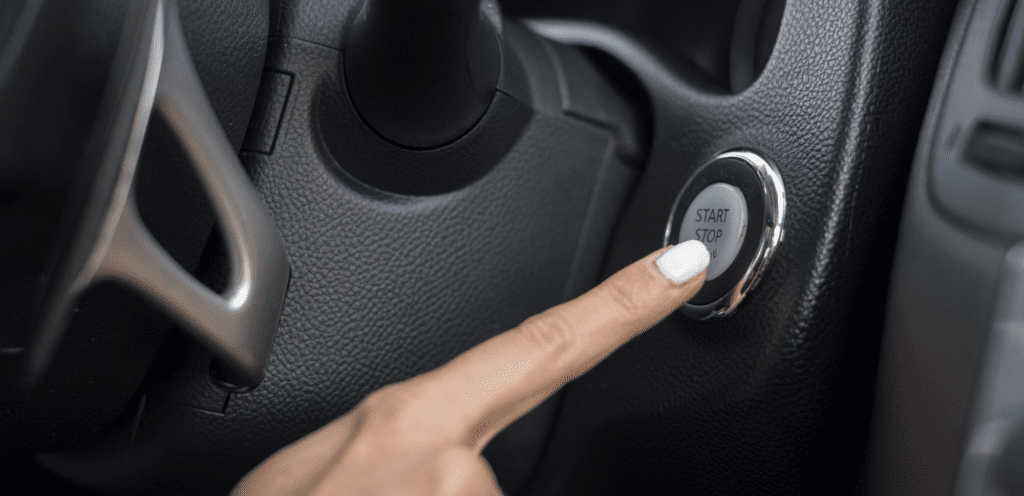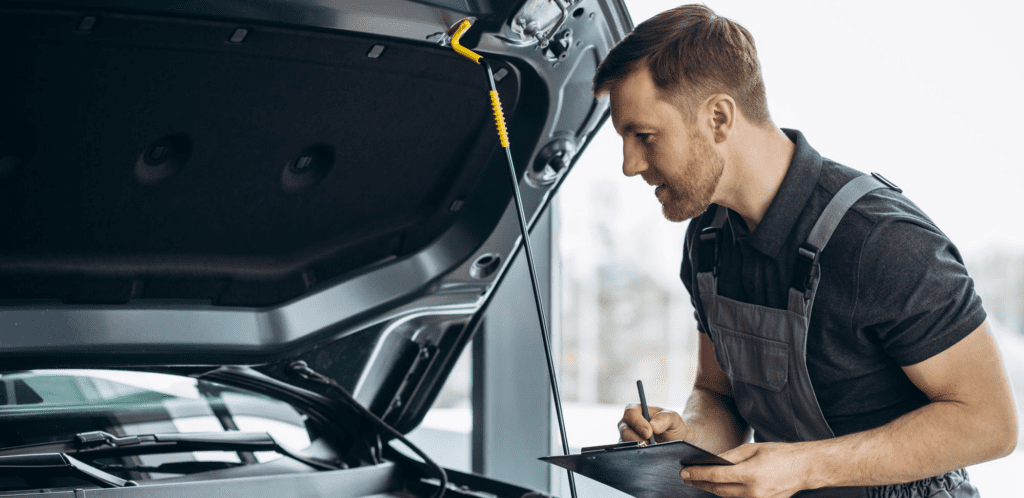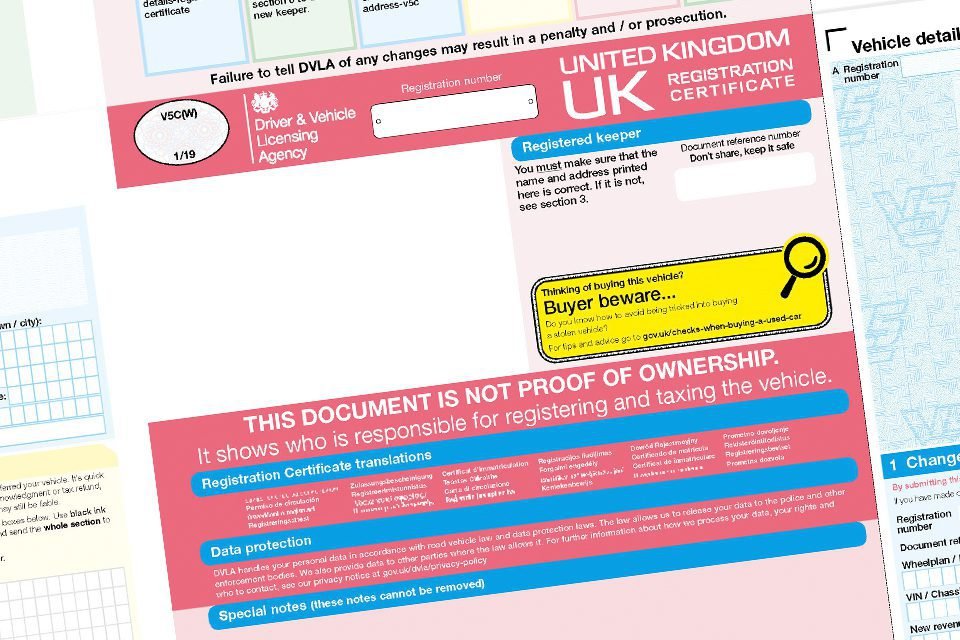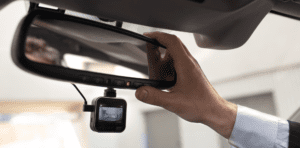Compare cheap car insurance
✔ Compare cheap car insurance quotes
✔ Over 110 insurance providers
✔ Get a quote in minutes
✔ Save up to £504*


Part exchanging your old car can be a convenient way to reduce the cost of purchasing a new vehicle while avoiding the hassle of selling your current model separately. But how does the process actually work? Let’s delve into the details.
- What does part exchange mean?
- What are the advantages of part exchange?
- What are the disadvantages of part-exchanging my car?
- How to get ready for part exchange
- How do I find out how much my car is worth?
- Where can I part exchange my car?
- How can I get a good deal on a part exchange?
- Should I part exchange my car?
- Frequently asked questions
What does part exchange mean?
Part exchange refers to the process of trading in your current car to a dealer when purchasing a new or used vehicle. Instead of selling or auctioning your old car independently, its value is deducted from the price of the vehicle you intend to buy.
This arrangement can provide several advantages, including cost savings and convenience.
By opting for part exchange, you can streamline the car buying process and potentially save money in multiple ways:
Simplified Transaction: Part exchange eliminates the need to handle the sale of your old car separately. Instead, the dealer handles the entire transaction, making the process more convenient and time-efficient.
Financial Benefit: The value of your current car is used as credit towards the purchase of the new or used vehicle, reducing the overall cost you need to pay. This can result in significant savings, particularly if your old car holds a reasonable trade-in value.
Time and Effort Savings: Selling or auctioning a car independently can be time-consuming and require significant effort. Part exchange spares you the hassle of advertising, negotiating, and finalising a sale, providing a more streamlined experience.
When considering part exchange, it is important to research both the value of your current car and the price of the vehicle you wish to purchase. This allows you to assess the fairness of the trade-in offer and ensure you are getting the best possible deal.
It’s worth noting that the part exchange value offered by a dealer may be lower than what you might expect to receive through a private sale. However, the convenience, time savings, and potential cost reduction can make part exchange an attractive option for many car buyers.
Ultimately, part exchange provides a convenient and efficient way to transition from your current car to a new or used vehicle, offering financial benefits and saving you the hassle associated with selling or auctioning your old car independently.
How much can you save on your car insurance?
What are the advantages of part exchange?
Part exchanging your vehicle offers several advantages that can make the car-selling process more convenient and hassle-free. Let’s take a closer look at some of the benefits:


Stress-Free Selling: Part exchange eliminates the need for you to advertise your car, respond to inquiries, and organise viewings and test drives with potential buyers. This saves you time and effort, sparing you from the stress and frustration often associated with selling a car privately.
Avoiding Timewasters: When selling a car independently, you may encounter timewasters who express interest but are not genuinely committed to making a purchase. With part exchange, you can bypass this issue, as you’re dealing directly with a professional car dealership that is focused on facilitating the transaction efficiently.
No Haggling: Negotiating with potential buyers can be challenging and time-consuming. Part exchange removes the need for haggling, as the trade-in value is agreed upon between you and the dealer. This allows for a smoother and more straightforward transaction process.
Eliminating After-Sale Responsibility: When you sell a car independently, you may face potential buyer complaints or requests for refunds if issues arise after the sale. With part exchange, you transfer the responsibility to the dealer, relieving you of any post-sale concerns regarding the car’s condition or performance.
Convenient Transition: Part exchange offers a seamless transition from your current car to the new one you intend to purchase. The dealer handles the necessary paperwork and logistics, ensuring a smooth process that saves you time and allows for immediate ownership of the new vehicle.
By choosing part exchange, you can enjoy the benefits of a stress-free selling experience, avoiding timewasters, haggling, and after-sale responsibilities.
Additionally, the convenience and efficiency of part exchange provide a seamless transition to your new vehicle, allowing you to enjoy your new purchase without the challenges often associated with private car sales.
How much can you save on your car insurance?
What are the disadvantages of part-exchanging my car?
While part exchanging your car offers convenience, there are some disadvantages to be aware of. Let’s explore these drawbacks:
Lower Selling Price: One major drawback of part exchange is that the value offered for your car is likely to be lower than what you could potentially receive through a private sale. Since the dealer sets the price, they may offer a lower trade-in value to accommodate their profit margins. This means you might not maximise your return compared to selling the car independently.
Limited Negotiation: When part exchanging, you have limited control over setting the price for your car. While it is possible to negotiate the trade-in value with the dealer, your bargaining power may be constrained. Dealers often have set pricing structures and profit targets that influence their trade-in offers. However, going into the negotiation well-informed and prepared can help you secure a fair trade-in value.
Potential Loss of Transparency: As part exchange involves combining the sale of your old car with the purchase of a new one, it may be challenging to see the transaction as two separate deals. This lack of transparency could make it difficult to determine the actual value you are receiving for your trade-in. It’s crucial to carefully analyse the trade-in offer and the pricing of the new car to ensure you are not unknowingly accepting a lower value for your vehicle.
Limited Market Reach: Opting for part exchange restricts your potential buyer pool to the specific dealership you are trading with. This could limit your ability to explore multiple offers and potentially secure a higher selling price through private sales or other dealerships.
To mitigate the disadvantages of part exchange, it’s essential to conduct thorough research on the market value of your car, prepare for negotiations, and consider multiple selling options. By being well-informed and proactive, you can increase your chances of obtaining a reasonable trade-in value for your vehicle.
While part exchange may not provide the maximum selling price compared to private sales, it offers convenience and a streamlined process. By carefully weighing the advantages and disadvantages, you can make an informed decision that aligns with your priorities and circumstances.
How much can you save on your car insurance?
How to get ready for part exchange
Before starting a part exchange with a dealer, it’s important to have a clear understanding of your car’s value.


Several factors contribute to determining the worth of your vehicle, including its age, condition, mileage, specifications, and any modifications it may have. By considering these aspects, you can be better prepared for the part exchange process.
Research and Valuation: Begin by conducting research to gather information about your car’s current market value. Utilise online valuation tools, consult industry guides, and browse through classified ads to get a sense of similar vehicles’ prices. These resources can provide a general estimate of your car’s worth, giving you a baseline to work with.
Vehicle Condition: Assess the overall condition of your car, taking note of any visible wear and tear, mechanical issues, or cosmetic imperfections. Be honest with yourself about its condition and consider how these factors may affect its value during the part exchange evaluation.
Mileage: Take into account the mileage on your car’s odometer. Lower mileage generally indicates less wear and tear, which can positively impact its value. Conversely, higher mileage may lower its worth. Keep a record of the exact mileage to provide accurate information during the part exchange process.
Specifications and Features: Consider any unique specifications or features your car possesses that may enhance its value. These could include advanced technology, upgraded audio systems, safety features, or additional accessories. Highlighting these qualities to the dealer may increase your car’s trade-in value.
Modifications: If you’ve made modifications to your vehicle, such as aftermarket upgrades or customisations, consider their impact on the car’s value. While certain modifications may increase appeal and value for specific buyers, others might have a limited effect or even lower the car’s trade-in value. Be prepared to provide details and explanations for any modifications during the part exchange evaluation.
By gathering this information and assessing your car’s value ahead of time, you can approach the dealer with a realistic expectation of its worth. This knowledge positions you to negotiate confidently and potentially secure a fair trade-in value during the part exchange process.
Remember to maintain transparency and provide accurate details to the dealer to ensure a smooth and mutually beneficial transaction.
How much can you save on your car insurance?
How do I find out how much my car is worth?
To find out how much your car is worth, you can utilise various online tools, such as AutoTrader, which provide a helpful estimation. It’s important to note that the online resale value may not directly reflect what a dealer will offer, as their aim is to maximise profit. However, having knowledge of your car’s value serves as a valuable negotiation tool during the part exchange process.
Online tools like AutoTrader offer a quick and convenient way to gauge the market value of your car. By entering your car’s details, including make, model, age, mileage, and condition, these tools generate an estimated value range.
While this valuation is a useful starting point, it’s essential to recognise that the final trade-in offer from a dealer may differ based on additional factors, such as demand, supply, and market conditions.
AutoTrader, and similar platforms, may also provide an option to receive an instant offer for your car. This offer can be considered when evaluating the trade-in value against the purchase of your next vehicle. It provides a benchmark figure that can inform your decision-making process during negotiations.
As you enter the part exchange process, it’s beneficial to have a baseline figure in mind regarding how much you are willing to accept for your car. If the dealer’s offer falls significantly below this threshold, it may impact your ability to afford the new vehicle you wish to purchase.
Knowing your limits empowers you to make informed decisions about whether to explore other dealerships or consider selling privately.
By arming yourself with knowledge about your car’s value and establishing your bottom line, you can confidently navigate the part exchange process. This ensures that you are well-prepared to negotiate with dealers and make informed choices that align with your financial goals and requirements.
How much can you save on your car insurance?
Where can I part exchange my car?
When considering part exchange, you have various options available to you. Most dealerships offer part exchange services, but it’s important to conduct some research to determine which dealerships provide the best deals for your specific needs. Here are some considerations to keep in mind:
Dealer Selection
Take the time to research different dealerships in your area and compare their part exchange offerings. Look for dealerships known for fair trade-in valuations, good customer service, and a wide selection of vehicles. Reading reviews and seeking recommendations can help you gauge the reputation and reliability of different dealerships.
Local Dealerships
If you are already having your car serviced at a local dealership, it’s worth inquiring about their part exchange options. Local dealerships often have a vested interest in maintaining customer loyalty and satisfaction, which could work in your favour when negotiating a trade-in deal.
Franchised Dealers
Franchised dealerships specialising in a particular car brand can offer advantages when part exchanging. Their familiarity with the specific make of your car makes it easier for them to appraise its value accurately. Additionally, if you intend to purchase another car of the same make, franchised dealerships may have a wider selection of options available, enhancing your convenience and potential for a smoother transaction.
Independent Dealers
Don’t overlook independent dealerships, as they may also offer competitive part exchange deals. These dealerships often have more flexibility in pricing and may provide personalised services tailored to your specific needs.
Online Dealership Platforms
In recent years, online dealership platforms have emerged as an alternative option for part exchange. These platforms provide the convenience of online valuation tools and a simplified process for obtaining trade-in offers. While this approach may lack the in-person experience of traditional dealerships, it can offer a quick and hassle-free part exchange option.
By exploring various dealership options, you can identify those that offer the best part exchange deals and align with your preferences. Don’t hesitate to reach out to multiple dealerships, gather trade-in valuations, and compare offers before making a decision.
This allows you to find the dealership that provides the most favourable terms and maximises the value of your part exchange transaction.
How much can you save on your car insurance?
How can I get a good deal on a part exchange?
To ensure you get the best possible deal on your part exchange, it’s essential to focus on the condition of your car and ensure that all necessary paperwork is in order. Here are some key steps to consider:
Car Presentation: Give your car a thorough cleaning, both inside and out, to present it in the best possible condition. A clean and well-maintained vehicle is more likely to attract positive attention from the dealer during the part exchange evaluation.


Maintenance and Repairs: Address any minor repairs or maintenance issues before initiating the part exchange process. Fixing simple problems such as dents, scratches, or faulty lights can enhance the overall appeal and value of your car. Consider getting a professional inspection to identify and rectify any underlying issues.
Service History: Gather your car’s service history documents and ensure they are up to date. A comprehensive and well-documented service history demonstrates that your car has been regularly maintained and can increase its value during the part exchange assessment.
MOT Certificate: Check the validity of your car’s MOT certificate and ensure it is up to date. An MOT certificate with a significant period remaining provides reassurance to the dealer that your car meets the necessary safety and environmental standards.


Vehicle Documentation: Prepare all relevant paperwork, including the V5C registration document, ownership records, service receipts, and any additional documentation related to your car. Having these documents readily available showcases your professionalism and helps expedite the part exchange process.
Research and Comparative Pricing: Conduct research to determine the fair market value of your car. Compare prices for similar vehicles and assess the trade-in offers provided by different dealerships. This knowledge equips you with a solid understanding of your car’s worth and enables you to negotiate more effectively during the part exchange process.
By presenting your car in its best possible condition and ensuring that all paperwork is organised and up to date, you increase your chances of securing a favourable part exchange deal.
Dealers appreciate well-maintained vehicles with thorough documentation, as it instils confidence and streamlines the transaction process. Additionally, being informed about market prices empowers you to negotiate confidently and advocate for a fair trade-in value.
Remember that the condition and preparation of your car can significantly impact the part exchange offer you receive. By investing time and effort into preparing your vehicle and having all the necessary paperwork in order, you position yourself for a successful and advantageous part exchange experience.
How much can you save on your car insurance?
Should I part exchange my car?
The decision to part exchange your car or sell it privately depends on your priorities and circumstances. Consider the following factors to help you make an informed choice:
Selling Price: If maximising the selling price is your primary goal, selling your car privately may be the preferred option. Selling privately gives you more control over setting the price and negotiating with potential buyers. Take time to research similar models and their selling prices to get an idea of what you can realistically expect.
Time Considerations: Selling a car privately usually takes longer than part exchange. If you’re in a hurry to purchase your new car, part exchange can offer a quicker and more convenient solution. Part exchange allows you to avoid the time-consuming process of advertising, handling inquiries, and arranging viewings with potential buyers.
Convenience: Part exchange offers a streamlined process by combining the sale of your old car with the purchase of a new one. This convenience can save you time and effort, as the dealer handles the paperwork and logistics involved. Selling privately requires more involvement on your part, including arranging meetings, test drives, and ensuring all legal requirements are met.
Financing Options: If you’re eager to buy your new car but concerned about the price you may receive through part exchange, you could explore car finance options. Car finance allows you to bridge the gap between the value of your old car and the cost of the new one. This option enables you to proceed with the purchase while potentially obtaining a better price for your old car through a private sale or other means.
Consider your personal circumstances, priorities, and preferences when deciding whether to part exchange or sell your car privately. Evaluate the selling price, time constraints, convenience, and financing options available to you.
By weighing these factors, you can make a decision that aligns with your needs and helps you achieve your desired outcome.
Frequently asked questions
The timing of part exchanging your car can indeed have an impact, as certain seasons or market trends can affect the attractiveness of your vehicle to both dealers and private buyers. Here are some key factors to consider:
Seasonal Demand: The type of car you own can influence its desirability at different times of the year. For instance, convertibles may be less popular during the cold winter months when driving with the top down is less appealing. On the other hand, sturdy 4×4 vehicles tend to be in higher demand during winter for their traction and handling in adverse weather conditions. Understanding the seasonal fluctuations in demand can help you gauge when to part exchange your car for optimal results.
Supply and Demand Dynamics: The broader supply and demand dynamics of the used car market can also impact part exchange values. Factors such as economic conditions, changes in consumer preferences, and the availability of specific models can influence the demand and subsequently affect the prices offered by dealers or private buyers.
Rising Used Car Prices: It’s worth noting that used car prices have been on the rise since 2021. This can be attributed to various factors, including supply chain disruptions, increased demand for personal transportation, and the growing popularity of the used electric car market. Understanding these market trends can help you navigate the part exchange process more effectively and potentially negotiate a more favourable trade-in value.
While timing can play a role in part exchanging your car, it’s important to consider other factors such as your personal circumstances, the condition of your vehicle, and your readiness to purchase a new car.
While market dynamics can influence the trade-in value, it’s also essential to prioritise your individual needs and make a decision that aligns with your goals.
Keep in mind that thorough research, staying informed about market trends, and consulting with dealerships or automotive experts can help you make an informed decision about the best time to part exchange your car.
By understanding the supply and demand dynamics specific to your vehicle and considering broader market trends, you can optimise the value you receive during the part exchange process.
If your car has mechanical issues or cosmetic damage, part exchanging it can still be an option. However, there are some considerations to keep in mind. Here’s what you need to know:
Assessing Repair Costs: Before deciding to part exchange, it’s crucial to evaluate the repair costs involved. Consult with a reliable mechanic who can provide an accurate assessment of the necessary repairs and their associated expenses. Compare these costs against the potential increase in the sale value of your car after the repairs have been completed.
Weighing Effort and Expense: Consider the effort and expense required to repair the car and whether it’s worth undertaking. Factor in the time, energy, and financial investment involved in fixing the damage. Balancing the repair costs against the potential trade-in value can help you determine if part exchanging is a viable option.
Expert Opinion: Seek advice from a trusted mechanic or automotive professional who can offer insights into the condition of your car. They can provide guidance on whether the repairs are worthwhile and if the car’s value would significantly improve after the necessary work has been done.
While part exchanging a damaged car is possible, it’s important to carefully assess the costs, effort, and potential returns. Depending on the extent of the damage, it may be more beneficial to repair the car before part exchanging, especially if the repairs will significantly increase its value.
A professional assessment from a knowledgeable mechanic can provide valuable insights to help you make an informed decision.
Remember, dealerships and private buyers may offer different valuations for a damaged car. Be prepared to negotiate and have realistic expectations regarding the trade-in value you can expect.
By considering the repair costs, seeking expert advice, and comparing trade-in offers, you can make an informed choice about whether to part exchange your damaged car or explore alternative options.
Absolutely! When part exchanging your car, haggling with the dealer can help you secure the best possible price.
Although it may initially feel uncomfortable, it’s important to remember that the dealer is also aiming to maximise their profit and understands that negotiation is part of the process. Here are some tips for successful haggling:
Confidence in Negotiation: Approach the negotiation with confidence. Remember that both the asking price of the new car and the part-exchange value are subject to negotiation. Don’t hesitate to advocate for a fair deal that meets your expectations.
Starting High: Begin the negotiation by setting a higher value for your car, allowing room for negotiation. This provides you with more flexibility during the haggling process. The dealer may counter with a lower offer, but by starting high, you increase the likelihood of reaching a mutually satisfactory agreement.
Research and Preparation: Do your homework and gather information about your car’s value and market trends. This knowledge equips you with evidence to support your desired valuation during negotiations. Research similar models, consider their selling prices, and be prepared to present your findings to the dealer.
Be Willing to Walk Away: Remember that you have the power to walk away from a deal that you feel is unfair. If the dealer is unwilling to meet your valuation or offer a reasonable trade-in value, don’t be afraid to explore other options or consider selling your car privately. Your willingness to walk away can sometimes encourage the dealer to reconsider their offer and potentially improve the terms.
Remain Polite and Professional: While negotiations may become intense, it’s crucial to maintain a polite and professional demeanour throughout the process. Building a respectful relationship with the dealer can foster a more constructive negotiation and increase the chances of reaching a mutually beneficial agreement.
By employing these haggling strategies, you can increase your chances of securing a better deal during the part exchange process. Remember, negotiation is a common practice in the automotive industry, and dealers anticipate it.
Approach the haggling process confidently, armed with research, and be prepared to stand your ground or walk away if the deal doesn’t meet your expectations.
Yes, it is possible to part exchange or sell a car with outstanding finance, although the process can be a bit more involved.
Here’s what you need to know:
Determine the Current Value: Begin by finding out the current value of your car. Research similar models and consult valuation tools to get an estimate of its market worth. This will give you an idea of how much equity you have in the car.
Settle the Finance: Contact your finance company to determine the exact amount you owe on the car. This includes any remaining loan balance, interest, or early settlement fees. Compare this amount with the current value of the car to assess the equity you have.
Equity and Part Exchange: If the value of your car is higher than the amount you owe, you have equity. This equity can be used as a down payment towards your new car if you decide to part exchange. The dealer will typically handle the paperwork involved in settling the finance and transferring the equity.
Private Sale and Finance Settlement: If you choose to sell your car privately, you will need to settle the outstanding finance before transferring ownership to the new buyer. This can be done by paying off the remaining balance directly to the finance company or arranging for the buyer to make the payment on your behalf.
Communication with Finance Company: It’s essential to keep open communication with your finance company throughout the process. Inform them of your intention to part exchange or sell the car, and ensure that all necessary steps are taken to settle the finance appropriately.
Paperwork Handling: When part exchanging with a dealer, they will typically manage the paperwork involved in settling the finance and transferring ownership. This can simplify the process for you and save time and effort.
Remember, each finance agreement may have specific terms and conditions regarding part exchange or selling the car. Review your finance agreement and consult with the finance company to ensure you comply with any requirements or restrictions.
By understanding the current value of your car, settling the outstanding finance, and communicating effectively with the finance company and dealer, you can navigate the process of part exchanging or selling a car with outstanding finance.
The equity in your car can be a valuable asset that can contribute towards the purchase of your new vehicle.










